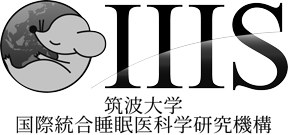Research

現代生命科学の発展はマウスなしには語れません。もっとも広く用いられている哺乳類動物モデルであり、遺伝子編集技術、光遺伝学や種々のイメージング技術といった生命現象を理解するための有用なツールがそろっています。私たちの研究室では、マウスを用いて睡眠覚醒サイクルを担う分子的、神経科学的な最小単位を同定し、その保存性を他の生物種と比較することで明らかにすることを目指しています。 キーワード:シナプス可塑性、光遺伝学、遺伝子編集、エピジェネティクス

マウス研究を中心に発展してきた現代生命科学は転機を迎えています。現在、これまでマウスに限定されていた有用なツールが他の生物にも適用できるようになってきました。August Krogh博士がKroghの法則"for such a large number of problems there will be some animal of choice, or a few such animals, on which it can be most conveniently studied."を提唱してから約100年の時を経て、自身が醸成した問いに適した生物種を選ぶことが可能になってきました。私たちの研究室では、社会性昆虫であるアリに着目し、遺伝的に均一であるアリがどのように、後天的に表現型を多様化させていくのかについて研究しています。 キーワード:社会性、遺伝子編集、質量分析計、電気生理学、エピジェネティクス

数十億の塩基対を持つ細胞が数十兆個集まり、それらが複雑に相互作用する生命というシステムにおいて、データサイエンスや数理モデルは重要な役割を果たします。私たちの研究室では、マルチモーダルなデータを解析し、数理モデルを構築することで、複雑な生命現象の背後にある法則をひも解くことを目指します。 キーワード:機械学習、微分方程式、時系列解析、バイオインフォマティクス

- 2017
- 東京大学大学院医学系研究科機能生物学専攻博士課程修了
- 2017-2022
- 東京大学医学部システムズ薬理学教室 助教
- 2022-
- 筑波大学国際統合睡眠医科学研究機構(WPI-IIIS)史研究室
- Secretary
- 2名
- Posdoc
- 6名
- JSPS fellows
- 2名
- Technician
- 5名
- Ph.D. student
- 2名
- Undergrad. student
- 1名
Publication
- 1.
- Sawada T#, Iino Y#, Yoshida K#, Okazaki H#, Nomura S#, Shimizu C, Arima T, Juichi M, Zhou S, Kurabayashi N, Sakurai T, Yagishita S, Yanagisawa M*, Toyoizumi T, Kasai H*, . Prefrontal synaptic regulation of homeostatic sleep pressure revealed through synaptic chemogenetics. Science 385, 1459-1465 (2024).
- 2.
- Yamada T and . Estimating infection-related human mobility networks based on time series data of COVID-19 infection in Japan. Applied Sciences, 12(18), 9236 (2022).
- 3.
- Katori M#, , Ode KL, Tomita Y, Ueda HR. The 103,200-arm acceleration dataset in the UK Biobank revealed a landscape of human sleep phenotypes. Proc. Natl. Acad. Sci. U.S.A. 119(12), e2116729119 (2022)
- 4.
- Yamada T#, , Ueda HR. A Design principle of Spindle Oscillations in Mammalian Sleep. iScience 25(3), 103873 (2022)
- 5.
- Ode KL#, , Katori M#, Mitsui K, Takahashi S, Oguchi R, Aoki D, Ueda HR. ACCEL: a jerk-based algorithm for the accurate classification of sleep–wake states from arm acceleration. iScience. 25(2), 103727 (2022)
- 6.
- Eguchi A#, Yoneoka D#, , Tanoue Y#, Kawashima T#, Nomura S#, Matsuura K#, Makiyama K#, Uryu S#, Sawada M, Kawamura Y, Takayanagi S, Gilmour S, Miyata H. Effect of emergency declaration on mental health during the COVID-19 pandemic in Japan: A social network service-based difference-in differences approach. Science Progress. 104(3), 1-9 (2021)
- 7.
- Yoneoka D#, , Nomura S#, Tanoue Y#, Kawashima T#, Eguchi A#, Matsuura K, Makiyama K, Uryu S, Ejima K, Sakamoto H, Taniguchi T, Kunishima H, Gilmour S, Nishiura H, Miyata H. Assessing the regional impact of the Japan’s COVID-19 state of emergency declaration: a population-level observational study using social networking services. BMJ Open. 15;11(2) (2021)
- 8.
- Kawashima T#, Nomura S#, Tanoue Y#, Yoneoka D#, Eguchi A#, , Miyata H. The relationship between fever rate and telework implementation as a social distancing measure against the COVID-19 pandemic in Japan. Public Health. 192, 12-14 (2021)
- 9.
- Eguchi A#, Yoneoka D#, , Tanoue Y#, Kawashima T#, Nomura S#, Matsuura K, Makiyama K, Ejima K, Gilmour S, Nishiura H, Miyata H. Trend change of transmission route of COVID-19 related symptom in Japan. Public Health. 187, 157-160 (2020)
- 10.
- Yoneoka D#, Tanoue Y#, Kawashima T#, Nomura S#, , Eguchi A, Ejima K, Taniguchi T, Sakamoto H, Kunishima H, Gilmour S, Nishiura H, Miyata H. A large-scale epidemiological monitoring of the COVID-19 in Tokyo. Lancet Reg. Health West. Pac. 3, 100016 (2020)
- 11.
- Nomura S#, Yoneoka D#, , Tanoue Y#, Kawashim T#, Eguchi A#, Ejima K, Taniguchi T, Sakamoto H, Kunishima H, Gilmour S, Nishiura H, Miyata H. How Japan's state of emergency declaration for COVID-19 worked against the risk of infection: an assessment of the non-specific symptoms of 227,898 users of a social networking service. Lancet Reg. Health West. Pac. 1, 100011 (2020)
- 12.
- , Tanaka S, Ueno R, Gilmour S, Tanoue Y, Kawashima T, Nomura S, Miyata H, Yoneoka D. Impact of travel restrictions on importation of novel coronavirus infection: An effective distance approach. Bull World Health Organ. 98, 518-529 (2020)
- 13.
- , Millius A, Ueda HR. Genes and Ion Channels in the Circadian and Homeostatic Regulation of Sleep. Handbook of Behavioral Neuroscience. 30, 181-194 (2019)
- 14.
- Yoshida K#, , Ukai-Tadenuma M, Fujishima H, Ohno RI, and Ueda HR. Leak potassium channels regulate sleep duration. Proc. Natl. Acad. Sci. U.S.A. 115 (40), E9459-E9468 (2018)
- 15.
- and Ueda HR. Ca2+‐Dependent Hyperpolarization Pathways in Sleep Homeostasis and Mental Disorders. BioEssays News Rev Mol Cell Dev Biol. 40 (2018)
- 16.
- Tatsuki F#, Sunagawa GA#, , Susaki EA#, Yukinaga H#, Perrin D#, Sumiyama K, Ukai-Tadenuma M, Fujishima H, Ohno RI, Tone D, Ode KL, Matsumoto K, Ueda HR. Involvement of Ca2+ - Dependent Hyperpolarization in Sleep Duration in Mammals. Neuron. 90, 70-85 (2016)
- 17.
- , Seki S, Matano T, Yamamoto H. IL-21-producer CD4+ T cell kinetics during primary simian immunodeficiency virus infection. Microbes and Infection. 15(10-11), 697-707 (2013)
Contact

- address
- 〒305-8575 茨城県つくば市天王台1-1-1
筑波大学 国際統合睡眠医科学研究機構
IIIS, 1-1-1 Tennodai, Tsukuba, Ibaraki 305-8575, Japan - tel
- +81-29-853-7499
- shi.shoi.gf[at]u.tsukuba.ac.jp
 Home
Home
